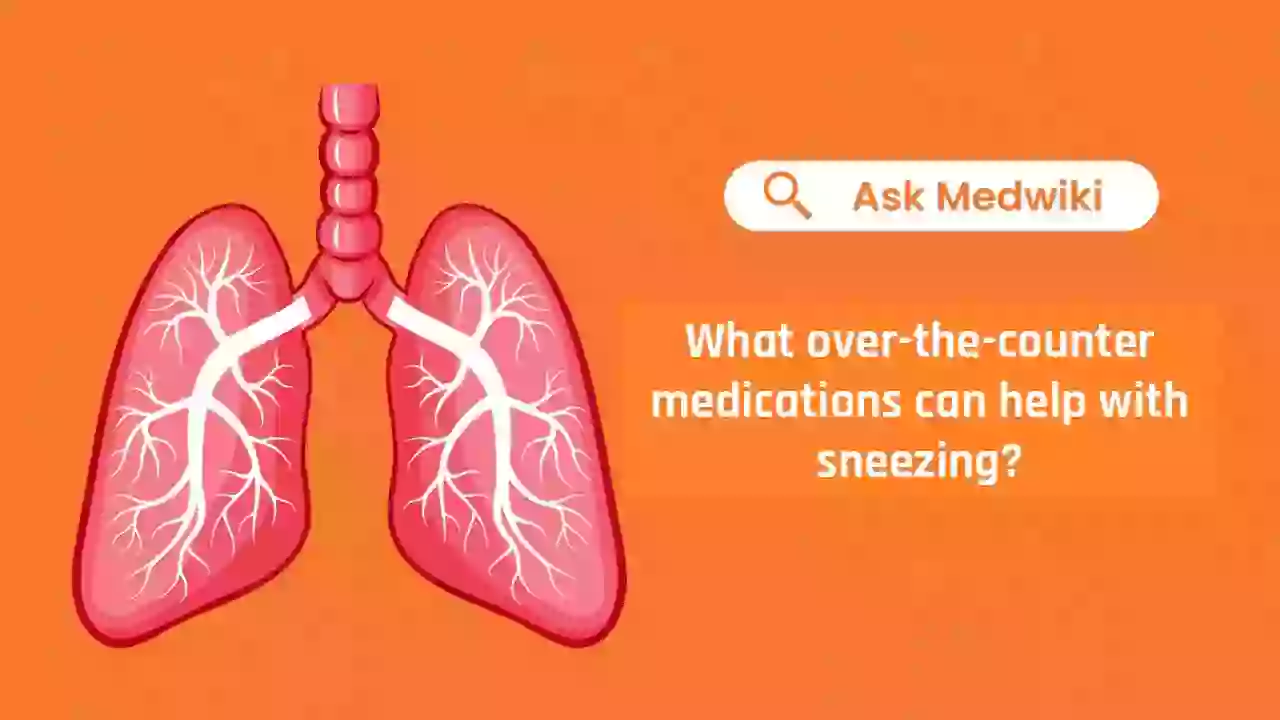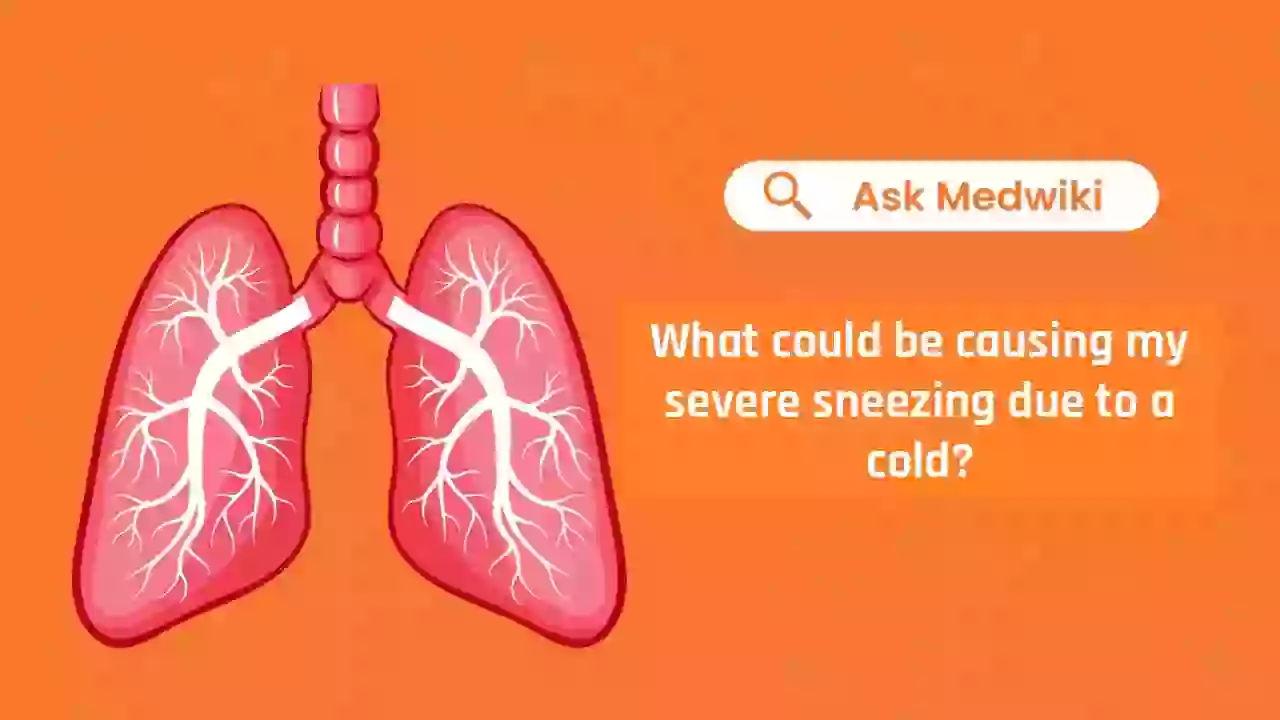To help with phlegm and coughing, consider these over-the-counter options: - **Expectorants:** Medications like guaifenesin (Mucinex) can help thin and loosen mucus, making it easier to cough up. - **Cough Suppressants:** Dextromethorphan (Robitussin) can help reduce the urge to cough, providing relief. - **Steam Inhalation:** Inhaling steam from a hot shower or a bowl of hot water can help loosen mucus in the chest. Always follow the instructions on the packaging and consult a healthcare professional if symptoms persist.
For sneezing relief, consider these over-the-counter options: - **Antihistamines:** These medications, such as loratadine (Claritin) or cetirizine (Zyrtec), help reduce sneezing by blocking histamines, which are chemicals that cause allergy symptoms. - **Decongestants:** Products like pseudoephedrine (Sudafed) can help relieve nasal congestion, which may indirectly reduce sneezing. - **Nasal Sprays:** Saline nasal sprays can help clear nasal passages, while steroid nasal sprays like fluticasone (Flonase) can reduce inflammation. Always follow the instructions on the label and consult a pharmacist or doctor if unsure.
Severe sneezing during a cold is often caused by the body's immune response to the virus. When the cold virus infects your nasal passages, it triggers the release of chemicals like histamines, which cause inflammation and irritation. This irritation leads to sneezing as your body attempts to expel the virus and clear the nasal passages.
A cough is a common reflex action that clears the throat of mucus or foreign irritants. It can be caused by various factors, including: - **Infections:** Such as the common cold, flu, or pneumonia. - **Allergies:** Reaction to pollen, dust, or pet dander. - **Asthma:** Often accompanied by wheezing and shortness of breath. - **Acid Reflux:** Stomach acid irritating the throat. - **Smoking:** Irritation from tobacco smoke. ### Tips for Managing a Cough: - **Stay Hydrated:** Drink plenty of fluids to thin mucus. - **Use a Humidifier:** Moist air can soothe a dry throat. - **Honey and Lemon:** A natural remedy to soothe the throat. - **Over-the-counter Medications:** Cough suppressants or expectorants can provide relief. ### When to Seek Medical Advice: - If the cough persists for more than three weeks. - If accompanied by high fever, chest pain, or difficulty breathing. - If you cough up blood or have unexplained weight loss. Consult a healthcare professional for a proper diagnosis and treatment plan if symptoms persist.
The flu, or influenza, is a contagious respiratory illness caused by influenza viruses. It can cause mild to severe illness, and at times can lead to hospitalization or even death. Here are some key points about the flu: - **Symptoms**: Common symptoms include fever, cough, sore throat, runny or stuffy nose, muscle or body aches, headaches, and fatigue. Some people may also experience vomiting and diarrhea, though this is more common in children. - **Prevention**: The best way to prevent the flu is by getting vaccinated each year. Other preventive measures include frequent hand washing, avoiding close contact with sick individuals, and covering your mouth and nose when coughing or sneezing. - **Treatment**: Antiviral drugs can be used to treat the flu. They are most effective when started within two days of getting sick. Rest, hydration, and over-the-counter medications can also help alleviate symptoms. - **Duration**: The flu typically lasts about one to two weeks, with severe symptoms subsiding after a few days, though fatigue and cough can persist longer. - **Complications**: Some people, especially those with underlying health conditions, may develop complications such as pneumonia, bronchitis, or sinus infections. For more detailed information, you can visit trusted health sources like the CDC or WHO websites.
Sinusitis is a common condition that causes inflammation in the lining of the sinuses. In Ayurveda, sinusitis is referred to as Apeenasa or Peenasa. It is considered a Kapha-Vata disorder, meaning it is caused by an imbalance of these two energies in the body.Symptoms of SinusitisFacial pain and pressureRunny or stuffy noseReduced or loss of smellHeadacheCoughAyurvedic Treatment for SinusitisAyurveda offers a variety of natural remedies to relieve sinusitis symptoms and address the root cause of the imbalance. Here are some of the main treatment approaches:Deepana-Pachana: This involves using herbs to improve digestion and eliminate toxins that may be contributing to the sinusitis.Snehana/Mukhabhyanga: This involves facial massage with oil to improve blood circulation and loosen congestion.Swedana Karma: This is a type of steam therapy that helps to loosen mucus and reduce inflammation.Nasya Karma: This is the nasal administration of medicated oils, drops, or powders. It is a very effective treatment for sinusitis as it delivers medication directly to the affected area.Panchakarma: In some cases, Panchakarma, a five-fold detoxification process, may be recommended to cleanse the body and eliminate deeper imbalances.Vamana Karma : Vamana is a method for forcefully removing undigested Pitta and Kapha (types of Doshas) by vomiting.Benefits of Ayurvedic TreatmentAyurvedic treatments are natural and have minimal side effects compared to conventional medications. Ayurveda focuses on treating the underlying cause of the imbalance, not just the symptoms. Ayurvedic treatments can also improve overall health and well-being.However, It is important to consult with a qualified Ayurvedic practitioner for diagnosis and treatment.Source:- AYUSHDHARA: International journal of Research in AYUSH and Allied Sciences
As winter arrives, many of us struggle with respiratory issues more often. Let's look at why respiratory issues increase in winter and some simple tips to help you breathe more easily.Why do respiratory issues increase in winter?Cold air and viruses: When the temperature drops, the inside of your nose cools down. This can weaken the cells that help fight off viruses and bacteria, making you more likely to get sick with the flu or a cold.Dry air: Winter air is much drier. When you breathe it in, it can dry out your airways, causing them to become inflamed. This can worsen conditions like asthma and lead to more mucus buildup.Indoor heating: While heating systems keep us warm, they can also reduce humidity levels in the air, drying out your respiratory system. This can lead to problems like sinusitis or bronchitis.Common respiratory issues and tips for managing them1. SinusitisSinusitis happens when your sinuses get inflamed, often due to an infection. This can lead to a blocked or runny nose and a bad headache.Use warm compresses on your nose and forehead to reduce pressure and ease headaches.Try a saline nasal spray to clear blocked sinuses.Inhale steam by adding a few drops of essential oils like eucalyptus to a bowl of hot water.2. BronchitisBronchitis is when the airways in your lungs become inflamed, often causing a persistent cough. It can be triggered by a virus or irritants like smoke.Use a steam inhaler to loosen mucus and help with breathing.Gargle with saline water to soothe your throat.Avoid smoking and take vitamin D to boost your immune system.3. AsthmaThe cold air in winter can irritate your airways, making asthma symptoms like coughing, wheezing, and tightness in the chest worse.Try to limit exposure to triggers like dust and pollen. A mask can help when you're outside.Avoid exercising outdoors in the cold, as dry air can trigger asthma attacks.Practice deep breathing exercises to help keep your airways relaxed.If your symptoms get worse or don’t improve, make sure to consult your doctor. By taking the right steps to protect your health, you can breathe easier this winter and stay well.Source:-1. https://www.health.harvard.edu/staying-healthy/7-strategies-to-fight-winter-breathing-problems 2. https://www.health.harvard.edu/staying-healthy/preventing-seasonal-maladies
Asthma is a common chronic respiratory condition characterized by inflammation and narrowing of the airways, leading to symptoms like wheezing, coughing, and shortness of breath. Diagnosis involves clinical tests, and treatment includes medications and lifestyle adjustments.Symptoms of AsthmaAsthma can have different symptoms, such as:Tight chestCoughing, usually at night or early morning.Struggling to breathe properly.Wheezing, a whistling sound when you breathe out.These symptoms can be mild or severe. They might appear daily or only sometimes.Asthma Attacks:An asthma attack occurs when the airway narrows, making it difficult to breathe. During an Asthma attack, symptoms might get even worse. Attacks can happen gradually or suddenly and may even be life-threatening. People with severe asthma, suffer from asthma attacks more frequently. If you're having frequent asthma attacks, your treatment may need adjustment.How is Asthma Diagnosed?Doctors use different methods to check if you have asthma:Physical Exam & Medical History: To understand your symptoms and triggers.Lung Function Tests:Spirometry: This test checks how well your lungs work. In this test, a small machine is attached to a mouthpiece through which you take a deep breath in, hold it for a few seconds, and then exhale as hard as you can into the mask. This measures how much air you can breathe in and out of your lungs.Peak Expiratory Flow (PEF): This test requires a handheld device called Peak Flow Meter that is used to measure how fast you can blow air out, using your maximum effort.Airway Reaction Tests: In this test, you inhale certain allergens or medicines to see how your airways respond. A spirometry test is done before and after the test.Fractional exhaled nitric oxide (FeNO) Test: This test measures nitric oxide levels in your breath when you breathe out. High levels of nitric oxide may mean that there is inflammation in your lungs.If you are diagnosed with Asthma, you will need to consult your doctor for a treatment plan. Here are a few treatment options for Asthma.What is the Treatment for Asthma?The treatment plan will include ways to manage your asthma symptoms and prevent asthma attacks. These include:Strategies to avoid triggers. Staying away from things that worsen your asthma, like smoke or allergens.Quick-relief medicines: These include inhalers or some medicines that provide quick relief. They are supposed to be carried along always. They help prevent symptoms or relieve symptoms during an asthma attack.Control medicines. These medicines are taken every day to help prevent symptoms. They reduce airway inflammation and prevent the narrowing of the airways.Advanced Treatment:Bronchial Thermoplasty: For adults with uncontrolled asthma, doctors might suggest a procedure called bronchial thermoplasty. It uses heat to shrink the muscles in your lungs, making it easier to breathe. This is usually the last option and might carry some risks. So, it is always recommended to discuss with your doctor in detail about such tests.Stay safe, avoid triggers, and follow your treatment plan!Source:-https://medlineplus.gov/asthma.html
Shorts
Dangers of Secondhand Smoke.
Dr. Beauty Gupta
Doctor of Pharmacy
Care for your Lungs!
Mrs. Prerna Trivedi
Nutritionist












